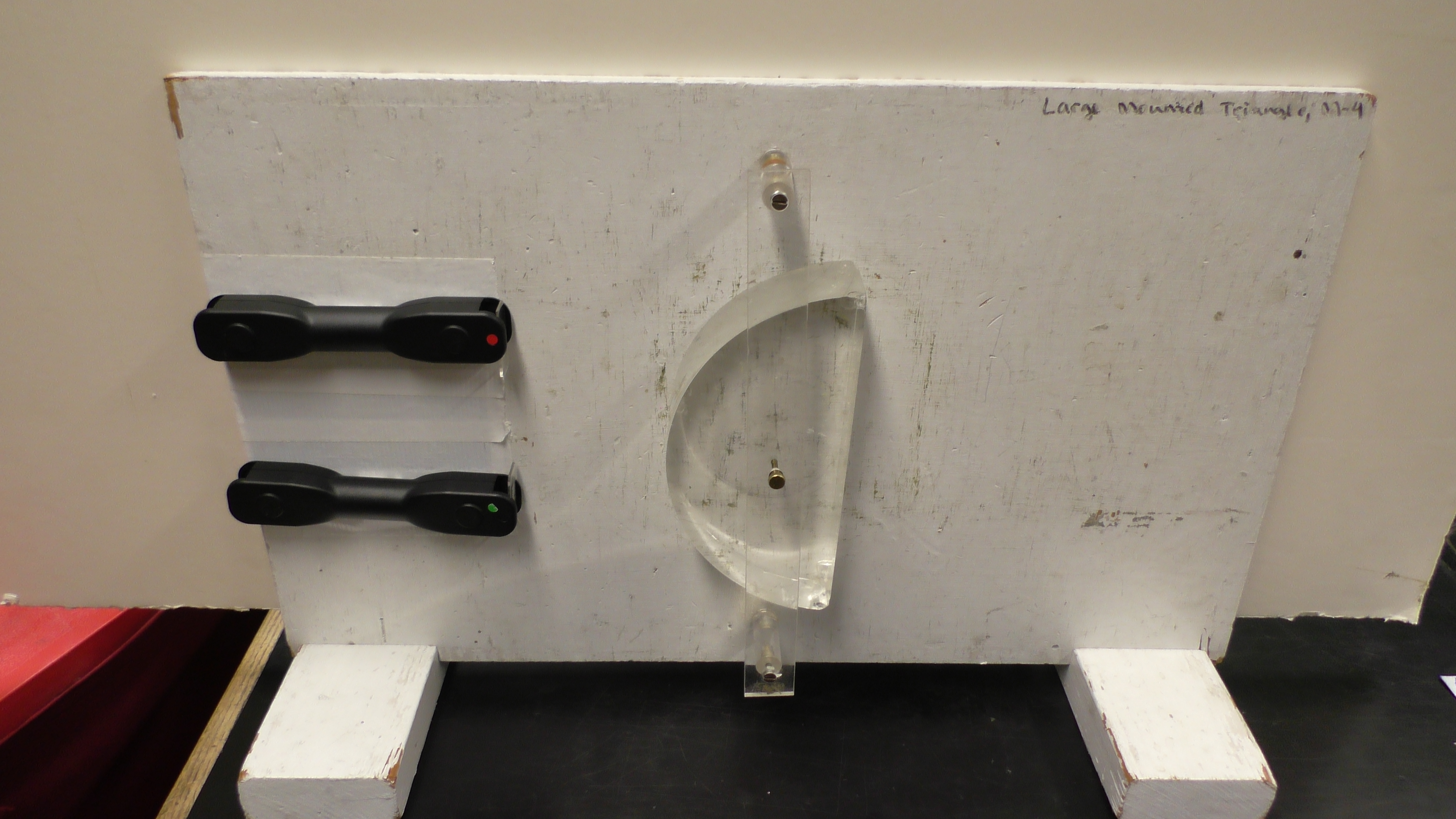Difference between revisions of "Lucite Block and Laser"
From UO Physics Demonstration Catalog
| (3 intermediate revisions by 2 users not shown) | |||
| Line 1: | Line 1: | ||
[[Category:Light and Optics]] | [[Category:Light and Optics]] | ||
[[Category: | [[Category:Geometrical Optics]] | ||
[[Category:Refraction and Dispersion]] | [[Category:Refraction and Dispersion]] | ||
Return to [[ | Return to [[Geometrical Optics]] | ||
Return to [[Refraction and Dispersion]] | Return to [[Refraction and Dispersion]] | ||
[[File:Laser&Lucite_Block.gif|right|frameless|400px]] | [[File:Laser&Lucite_Block.gif|right|frameless|400px]] | ||
[[File:Lucite Block.JPG|right|frameless|400px]] | |||
'''Description:''' | '''Description:''' | ||
A semi-circular piece of lucite is mounted on a | A semi-circular piece of lucite is mounted on a whiteboard. Laser light going through a cylindrical lens reflects off the board and also goes through the lens which spreads out the light source so the light appears on the whiteboard.. The light is incident at the center of the circular side of the block. Angles of reflection and refraction from and through the semi circular block can be observed and the angles change as you rotate the block. At one point, the light incident on the inner flat side of the block will reach the critical angle and the result will be total internal reflection. | ||
A white light line source, such as an old slide projector with a slit slide, can also be used as a light source. Approaching total internal reflection, the students will be able to observe dispersion, and see that blue light is bent differently than red. (A white light line source is also a bit brighter for classroom use.) | |||
'''Location: | '''Location: | ||
Latest revision as of 10:34, 19 October 2023
Return to Geometrical Optics
Return to Refraction and Dispersion
Description:
A semi-circular piece of lucite is mounted on a whiteboard. Laser light going through a cylindrical lens reflects off the board and also goes through the lens which spreads out the light source so the light appears on the whiteboard.. The light is incident at the center of the circular side of the block. Angles of reflection and refraction from and through the semi circular block can be observed and the angles change as you rotate the block. At one point, the light incident on the inner flat side of the block will reach the critical angle and the result will be total internal reflection.
A white light line source, such as an old slide projector with a slit slide, can also be used as a light source. Approaching total internal reflection, the students will be able to observe dispersion, and see that blue light is bent differently than red. (A white light line source is also a bit brighter for classroom use.)
Location:
- Laser and Cylindrical Lens: Shelf M-2
- Board and Lucite Lens: Shelf M-4
- Slide Projector: Shelf Q-4

